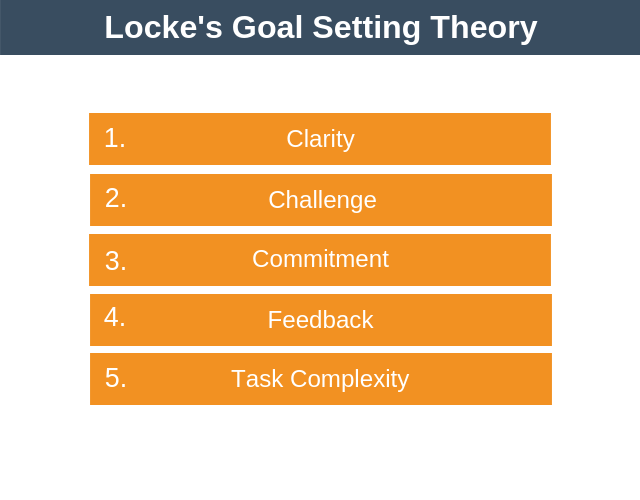
Management Guide: Goal-Setting Theory of Motivation
Are You Hiring?
Find candidates in 72 Hours with 5+ million talents in Maukerja Malaysia & Ricebowl using Instant Job Ads.
HIRE NOW
In the 1960s, Edwin Locke came up with the goal-setting theory of motivation. This theory states that goal setting is linked to task performance. It says that specific and challenging goals, along with appropriate feedback, contribute to higher and better task performance.
In simple words, goals describe what needs to be done and how much effort must be put in.
The essential elements of the goal-setting theory are as follows:
-
The willingness to work towards the goal is the primary source of job motivation. Clear, particular and challenging goals are more significant motivating factors than simple, general and vague goals.
-
Specific and clear goals lead to better performance. Clear and measurable goals followed by a deadline will avoid misunderstanding.
-
Goals should be realistic and challenging as it gives one a feeling of pride when once achieved, and sets up for accomplishment of next goal. The harder the goal, the bigger the reward and the more the enthusiasm for achieving it.
-
Better feedback influences employee behaviour and contributes to better performance than the lack of feedback. Feedback is a means of growing reputation, making clarifications and adjusting goal difficulties. It helps employees to work with more engagement and leads to higher job satisfaction.
-
Employees' participation in setting a goal makes it more acceptable and leads to more involvement from them.
Setting vague goals will not lead to increased motivation. Examples of vague goals include:
- "Do your best."
- "Be better at your job than the rest of the crew."
- "Finish your assignment to the best of your ability."

The 5 Elements of Goal Setting. Source: Expert Program Management
Goal-setting theory has several possible outcomes, such as:
Self-efficiency: The individual's self-confidence that they have the potential of performing the task. The higher the level of self-efficiency, the greater the efforts put in by the person when they face challenging tasks.
Goal commitment: Goal-setting theory implies that the individual is committed to the goal and won't leave the goal. The goal commitment depends on these factors:
- Goals are made open, known and announced.
- Goals should be set-self by the person rather than delegated.
- The person's set goals should be compatible with the organisational goals and vision.
The pros of goal-setting theory
-
Goal-setting theory is a method used to raise incentives for workers to finish work quickly and effectively.
-
Goal-setting leads to better performance by increasing motivation and improving feedback quality.
The cons of goal-setting theory
-
Sometimes, the organisational goals conflict with organisational goals. Goal conflict harms the performance if it motivates incompatible action drift.
-
Challenging and complex goals stimulate riskier behaviour.
-
Suppose the employee lacks skills and competencies to perform actions essential for goal. In that case, the goal-setting can fail and lead to the undermining of performance.
-
There is no data to prove that goal-setting improves job satisfaction.
The main takeaway from the Goal-Setting Theory is that goal-setting when done right can be an impactful tool for improving motivation and productivity.
This applies when you are setting personal goals, as well as team goals. By using the Goal-Setting Theory you can keep your team, and yourself, productive and motivated.
Learn more about AJobThing and our services!
Sources: Expert Program Management & Management Study Guide
Articles you might be interested in
Everything You Need to Know About Annual Leave
3 Company Leave Application Form Templates for HR
HR Guide: Managing Employee Sick Leaves





